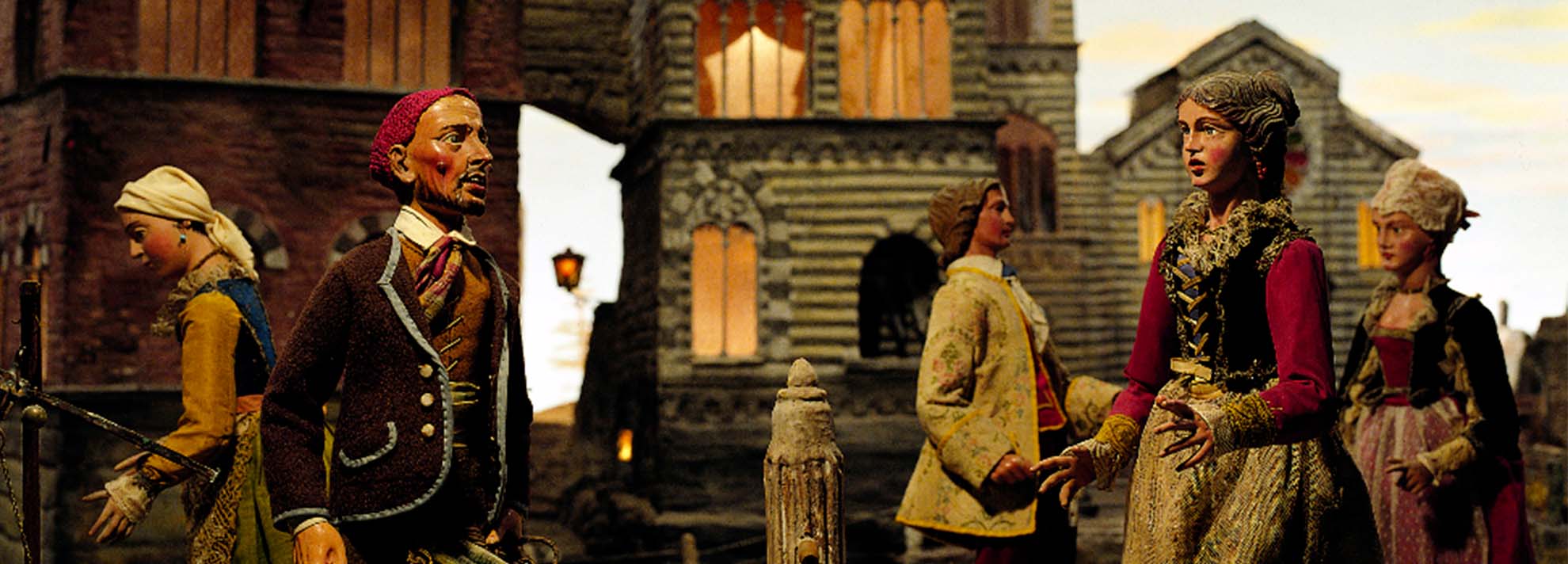Nativity scenes, the curtain rises

Genoa is a city of nativity scenes, amidst enchanted, more or less illusory landscapes and “popular” artistic traditions. It is difficult to establish the date of origin of the sacred representation.
The oldest evidence dates back to a fresco found in the catacombs of Priscilla in Rome, dating from only 100 years after the birth of Christ. The nativity scene is mentioned as early as 1330 in Naples, but it is in Tuscany – with the Nativity in the Duomo of Volterra – that the nativity scene appears with an apparatus that would later become the most frequent.
In Genoa, an independent republic in 1528, in this time of great economic and cultural splendour the arts flourished and the first nativity figurines (carved in wood and painted) appeared, inspired by marble sculptures, altar frontals and paintings depicting the Nativity and the Adoration of the Magi.
One of the best known is that of the Brignoline nuns’ convent in Viale Virginia Centurione Bracelli. This is a nativity scene from the end of the 17th century, with articulated wooden dummies and the only complete Neapolitan example of the period, the work of Giacomo Colombo.
However, between December and February, in the churches and sanctuaries of Genoa there is a flourishing of nativity scenes, often authentic masterpieces produced by the most eminent art workshops and artists of the Baroque age.
They bear witness to an era of past splendour, when the Genoese people were passionate lovers of these extraordinary polychrome wooden figurines – sacred families and glories of angels, Magi and pages, commoners and mulattoes, shepherds and beggars, bishops and weapons carriers, flocks and herds – with which the great nativity scenes were set in places of worship and aristocratic residences, capable each time of renewing the mysterious enchantment that springs from the encounter of art with faith.
At the Madonnetta sanctuary, there is an 18th century artistic nativity scene with figurines from the Maragliano’s school. It is a permanent nativity scene which can be visited all year round. A special feature of this exhibition is the setting, which reproduces the city to scale: in the salita della Madonnetta.
At the San Bartolomeo Oratory in Staglieno, you will find a traditional nativity scene with 18th-century figurines from the Maragliano’s school.
At the Sanctuary of Nostra Signora delle Grazie, there is the Sacred Representation donated by the Duchess of Galliera to the Church of San Nicolò in Voltri: several dozen statuettes, probably from the Maragliano’s school.
Some thirty figurines made by Maragliano are on display at the Church of the Santissima Concezione, as well as a few others attributed by experts to Gianfranco Battista Casanova, an author from the second half of the 18th century, in Piazza dei Cappuccini. A beautiful nativity scene can also be found in the secular Villa Luxoro in Nervi: the building, which houses a beautiful museum collection, is closed for restoration but will soon reopen.



